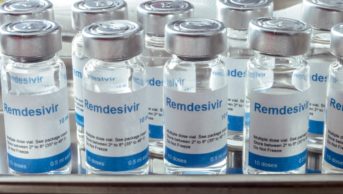
Shutterstock
The stimulant drug methylphenidate is associated with an increased risk of arrhythmias and myocardial infarction in children with attention deficit hyperactivity disorder (ADHD) during the early period of treatment, a study has found.
Researchers studied data on 1,224 patients aged 17 years and under from a South Korean insurance database who had at least one prescription for methylphenidate and who had experienced an incident cardiovascular event between 2008 and 2011.
The researchers, led by Ju-Young Shin from McGill University in Montreal, Canada, used a self-controlled case series design to attempt to reduce confounding by comparing patients during methylphenidate-exposed periods to themselves during unexposed periods.
They found that, overall, the rate of arrhythmias was 61% higher during exposed periods and was greatest during days 1–3 of treatment, when the risk was doubled compared with unexposed periods. The risk of arrhythmias was particularly pronounced among children with congenital heart disease, with an incidence rate ratio of 3.49 compared with 1.34 in children without congenital heart disease.
Methylphenidate was also associated with an increased risk of myocardial infarction, but only between days 8–56 of continuous treatment. The researchers found no substantial evidence to show that treatment was associated with an increased risk of hypertension, ischaemic stroke or heart failure.
Reporting their findings in The BMJ
[1]
(online, 31 May 2016), the authors say: “Methylphenidate exposure in children and young people with diagnosis of ADHD is associated with arrhythmia and potentially with myocardial infarction in specific time periods of use.”
“With the increased use of drugs for ADHD globally, the benefits of methylphenidate should be carefully weighed against the potential cardiovascular risks of these drugs in children and adolescents,” they add.
The researchers note that the absolute risk of cardiovascular adverse events associated with the drug is likely to be low, but say that the rate of myocardial infarction may be higher in early risk periods, which has not previously been observed and needs further exploration.
Commenting on the results, David Coghill, professor of child and adolescent psychiatry at the Royal Children’s Hospital in Melbourne, Australia, says that the overall message from the study is that the absolute cardiovascular risks with methylphenidate are low. But he adds that the researchers may have overlooked an important source of confounding.
“Both the increased ‘risk’ of cardiovascular events just before or just after starting medication could simply reflect increased attention and monitoring around this time,” he explains. “If you look for something you are more likely to see it than if you don’t.
“It is good practice to look for cardiovascular risk and adverse effects before you start medication (although often this is not done) and to monitor for any adverse effects after starting.”
He adds that it is best practice to screen for cardiovascular risk in patients before beginning ADHD medications and an electrocardiogram is recommended in those who might have a familial risk of arrhythmias. Patients should also be monitored for pulse rate and rhythm and blood pressure during treatment.
Coghill says there are other effective treatments for ADHD, such as guanfacine, that do not have the same adverse effect profile as methylphenidate and can be useful for patients at higher risk for cardiovascular effects.
References
[1] Shin J-Y, Roughead EE, Park B-J et al. Cardiovascular safety of methylphenidate among children and young people with attention-deficit/hyperactivity disorder (ADHD): nationwide self controlled case series study. BMJ 2016; 353: i2550. doi: 10.1136/bmj.i2550


